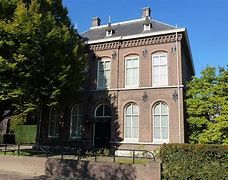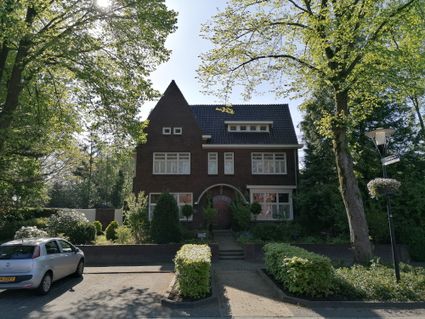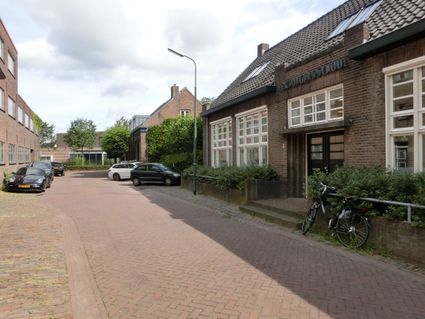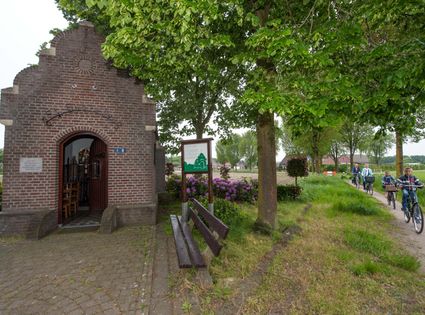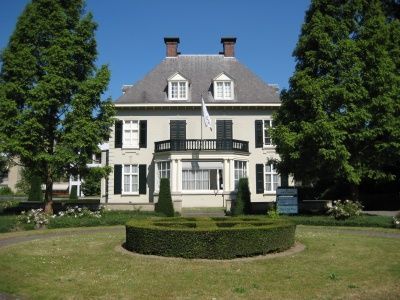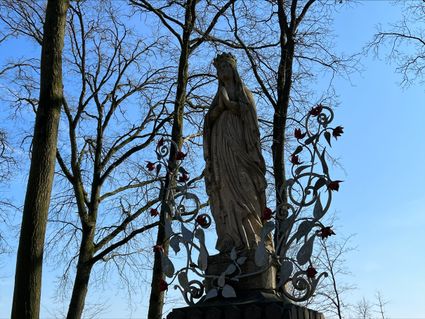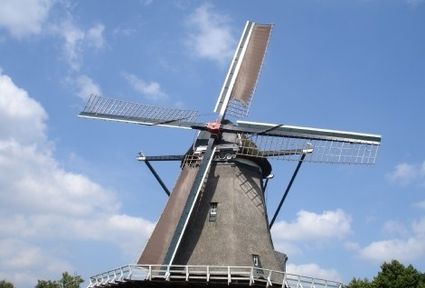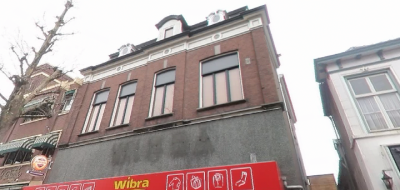Huize Angela
As a result of the changed function, a new building mass on an L-shaped plan was placed at the rear of the building in the former vicarage garden. This part is not protected. The building is located on the Dorpsstraat, next to the church, in the centre of Aarle-Rixtel.
Two-storey building on a rectangular floor plan under a flattened hipped roof. The roof is co…
As a result of the changed function, a new building mass on an L-shaped plan was placed at the rear of the building in the former vicarage garden. This part is not protected. The building is located on the Dorpsstraat, next to the church, in the centre of Aarle-Rixtel.
Two-storey building on a rectangular floor plan under a flattened hipped roof. The roof is covered with slates and has an overhang with a gutter strip. The front façade is five bays wide and has a central apse. An extension with bevelled sides, under a gently sloping roof, is placed against the left side façade. This contains a plaque with the inscription "P.C.P./H.DE BEER PAR/IN/.../1894". Behind it, at the corner of the building, is a one-storey annexe under a hipped roof with its ridge running at right angles to the street. The building is made of brick and has a slightly protruding natural stone plinth. The window sills under the windows are made of natural stone and continue as water strips over the entire façade. Directly under the eaves, a brick frieze is applied. On the ground floor, there are six-pane round arched windows; on the first floor, there are rectangular six-pane windows. All windows are placed in a frame of profiled brick in a different colour than the façade. The dormer windows are spread across the roof and have a saddleback roof and spire, covered with slates and crowned with a zinc finial. In the centralrisaliet there is a double panel door with a rounded arch overlight, filled with stained glass. In front of the door, there is a brick staircase. In the interior, the layout is largely in its original state. A long corridor cuts through the building, with rooms on either side. Elements from the original interior are sober, including high stucco ceilings, the staircase with carved wooden balusters and panel doors in wooden profiled frames.
The building is of general importance. It is of cultural-historical importance as an expression of the development of Catholicism in the south of the Netherlands and is also important as an example of the typological development of the village rectory. It has architectural-historical value because of its sober style and the striking detailing. It has ensemble values in connection with the church, the former town hall and the Sacred Heart statue.
